 According to Pilgrims Fair Trade (PFT), Pushkar Temple (PT) Incense is a “Producer of natural traditional Indian [incense] for prayer, pooja and meditation from the Holy city of Pushkar, Rajasthan.” As such it’s something of a separate line compared to most of the incenses coming out of Mumbai and Bangladore. Pushkar Temple Incense exports a healthy range of different incenses and it looks like they’re sold by a number of different vendors; however, the largest range appears to be sold by PFT and so the links will be going to the store I bought it from, PFT’s Etsy shop. Note they also sell the same incenses through their website as well as on ebay but PFT moved remaining stock to the Etsy in anticipation of this review as the link addresses change when they are out of stock. One other seller, I noticed, repackages them under their own names, which probably will add some confusion to the mix. I will just note that there probably are roughly 30-40 incenses in the PT catalog and at the end of the series, I may check in to see if I missed anything and remedy what we’re missing later. I ordered from PFT twice and the service was exemplary both times. Do note that PFT also regularly restock so it’s worth checking back if something that sounds interesting is out of stock (I will let readers know they’re back as well).
According to Pilgrims Fair Trade (PFT), Pushkar Temple (PT) Incense is a “Producer of natural traditional Indian [incense] for prayer, pooja and meditation from the Holy city of Pushkar, Rajasthan.” As such it’s something of a separate line compared to most of the incenses coming out of Mumbai and Bangladore. Pushkar Temple Incense exports a healthy range of different incenses and it looks like they’re sold by a number of different vendors; however, the largest range appears to be sold by PFT and so the links will be going to the store I bought it from, PFT’s Etsy shop. Note they also sell the same incenses through their website as well as on ebay but PFT moved remaining stock to the Etsy in anticipation of this review as the link addresses change when they are out of stock. One other seller, I noticed, repackages them under their own names, which probably will add some confusion to the mix. I will just note that there probably are roughly 30-40 incenses in the PT catalog and at the end of the series, I may check in to see if I missed anything and remedy what we’re missing later. I ordered from PFT twice and the service was exemplary both times. Do note that PFT also regularly restock so it’s worth checking back if something that sounds interesting is out of stock (I will let readers know they’re back as well).
First of all we’re going to get a few incenses out of the way that aren’t necessarily my favorites in the catalog, but please note that there are a lot of very extraordinary and high quality incenses in the PT catalog and even an incense or two in this installment are better representations of their aromas than you’re likely to find elsewhere and reviews of all of these are coming in future installments. So it’s always good to pay attention to ingredients that I am just naturally not all that fond of no matter how well they’re done, you might very well like some of these better. I am having to divvy them up in groups and for the 100g batches which I will start with, they roughly split up as floras, and two more or less miscellaneous groups, of which we’re going to do the smaller and lesser group first. Keep in mind that, postage aside, 100g of the first incense I will talk about is showing the day before publishing as $6.48 for 100g which is a tremendous price even when you include international postage. The 50g incenses roughly fall in the same price range so with an exception or two they tend to contain the line’s more premium incenses. These I will run in groups after the 100gs and I believe there should be about six installments at 4-5 incenses apieces on those. So let’s get started, there’s a lot to go through!
 Gugal is a gum that is often used in place of myrrh (in fact my initial notes stated that this was like the Pushkar version of AB’s King of Myrrh, but it’s not that sort of quality). Gugal (or guggal sometimes) always struck me as mediocre whether it’s the pure resin itself or any stick created from it (and does sort of smell like cheap myrrh). However, the bitterness in this stick does not lie at the fault of the resin itself, which is largely unremarkable, it smells to me that there’s been some sort of non-sandalwood wood content to base the incense and perhaps a distillation of the resin into a perfume. That is, it’s not only bitter but there’s some sort of sour quality as well. You will find from many other PT incenses that most of their incenses are never this harsh, so it feels like a bit of an anomaly. This does relate to the lobans a paragraph down, as gugal is sometimes a presence in those as well.
Gugal is a gum that is often used in place of myrrh (in fact my initial notes stated that this was like the Pushkar version of AB’s King of Myrrh, but it’s not that sort of quality). Gugal (or guggal sometimes) always struck me as mediocre whether it’s the pure resin itself or any stick created from it (and does sort of smell like cheap myrrh). However, the bitterness in this stick does not lie at the fault of the resin itself, which is largely unremarkable, it smells to me that there’s been some sort of non-sandalwood wood content to base the incense and perhaps a distillation of the resin into a perfume. That is, it’s not only bitter but there’s some sort of sour quality as well. You will find from many other PT incenses that most of their incenses are never this harsh, so it feels like a bit of an anomaly. This does relate to the lobans a paragraph down, as gugal is sometimes a presence in those as well.
 Hari Dhoop is a very difficult incense to parse simply as it isn’t a dhoop in the most traditional sense (these often don’t have bamboo cores and are shaped like logs). It may be an attempt to do something similar in a stick form and it does present a perfume that sort of reminds me of a dhoop or two, but the perfume is also kind of sour and a little off-putting. It’s a lightly dusted charcoal that starts with a sort of powdery kind of background that is not particularly uncommon in this format and then seems to build something sweet on that but it’s almost more like what happens if you burn your chocolate chip cookies in the oven. In my initial notes, I found that this burnt smell may be due to actual floral material combusting, but it’s hard to know for sure without knowing the ingredients. Incenses like this always make you question whether or not this is an aroma that goes over much better in the east, but it’s hard to recommend simply because a continued burn over the stick just doesn’t sit well. Like the Gugal it becomes abrasive over time.
Hari Dhoop is a very difficult incense to parse simply as it isn’t a dhoop in the most traditional sense (these often don’t have bamboo cores and are shaped like logs). It may be an attempt to do something similar in a stick form and it does present a perfume that sort of reminds me of a dhoop or two, but the perfume is also kind of sour and a little off-putting. It’s a lightly dusted charcoal that starts with a sort of powdery kind of background that is not particularly uncommon in this format and then seems to build something sweet on that but it’s almost more like what happens if you burn your chocolate chip cookies in the oven. In my initial notes, I found that this burnt smell may be due to actual floral material combusting, but it’s hard to know for sure without knowing the ingredients. Incenses like this always make you question whether or not this is an aroma that goes over much better in the east, but it’s hard to recommend simply because a continued burn over the stick just doesn’t sit well. Like the Gugal it becomes abrasive over time.
I tend to feel the same about a lot of Loban incenses, but the two here are actually somewhat refined and feel more perfume based rather than being dominated by that sort of gravel-like middle that cheaper lobans have. These types of sticks are often built from cheap benzoin, guggal, frankincense or other resins and often resemble the least premium of catholic church resins.
 I bought the green-tipped Loban on my first major batch order from PFT and the pink seemed to be added a bit later, ultimately both may be too close in aroma to be particularly distinguishable. The green tipped is called Green Loban on the PFT Etsy site but just Loban on the PT packaging. It is actually quite refined for a loban, having a level of oil in the middle that is like very passable tree resins. There still is some level of that sort of low quality frakincense gravel smell on the outside, but in a way, a small quantity of this still kind of slots it nicely as a loban (the absolute finest loban I have ever tried is the premium in the cylindrical packaging at Vedic Vaani which actually doesn’t have any gravel of the sort). I would suspect, despite my reservations, that lobans are still popular enough to show up in so many catalogs, so people might like this better than I do. (I’ll note that I see ads for like 1000g batches of lobans, so they are not unpopular, even in the west apparently.) Anyway, this Green Loban seems to find itself in an acceptable middle, and there are almost foresty or pine like notes at the very tippy top that will likely inspire me to hang onto this batch for a while. But as a loban it can’t completely avoid what are harsher notes, some level of bitterness you get from inferior resin, a sort of astringency and the ever-present smell of heated rock. These aspects are just not as obtrusive as they often can be, which is certain a plus.
I bought the green-tipped Loban on my first major batch order from PFT and the pink seemed to be added a bit later, ultimately both may be too close in aroma to be particularly distinguishable. The green tipped is called Green Loban on the PFT Etsy site but just Loban on the PT packaging. It is actually quite refined for a loban, having a level of oil in the middle that is like very passable tree resins. There still is some level of that sort of low quality frakincense gravel smell on the outside, but in a way, a small quantity of this still kind of slots it nicely as a loban (the absolute finest loban I have ever tried is the premium in the cylindrical packaging at Vedic Vaani which actually doesn’t have any gravel of the sort). I would suspect, despite my reservations, that lobans are still popular enough to show up in so many catalogs, so people might like this better than I do. (I’ll note that I see ads for like 1000g batches of lobans, so they are not unpopular, even in the west apparently.) Anyway, this Green Loban seems to find itself in an acceptable middle, and there are almost foresty or pine like notes at the very tippy top that will likely inspire me to hang onto this batch for a while. But as a loban it can’t completely avoid what are harsher notes, some level of bitterness you get from inferior resin, a sort of astringency and the ever-present smell of heated rock. These aspects are just not as obtrusive as they often can be, which is certain a plus.
 The Pink Loban is a bit milder, a bit richer, and definitely less harsh. but it’s still close enough to the Green Loban that you really only need one. I’d pick this one because the heated rock/gravel tones have largely been refined out and it has a little more inner breadth to it. There are even some sweeter undertones, implying that oils are taking even more of the aromatic burden from resins. It sort of proffers the question which is how much of the cheaper resin bitter element can vanish before an incense is no longer a loban? Needless to say though, this one may have been discontinued and there is only one left as I write this, so its uncertain if it will be available again. It’s certainly one of the better lobans I have tried.
The Pink Loban is a bit milder, a bit richer, and definitely less harsh. but it’s still close enough to the Green Loban that you really only need one. I’d pick this one because the heated rock/gravel tones have largely been refined out and it has a little more inner breadth to it. There are even some sweeter undertones, implying that oils are taking even more of the aromatic burden from resins. It sort of proffers the question which is how much of the cheaper resin bitter element can vanish before an incense is no longer a loban? Needless to say though, this one may have been discontinued and there is only one left as I write this, so its uncertain if it will be available again. It’s certainly one of the better lobans I have tried.
Stick with me, it gets even better from here…
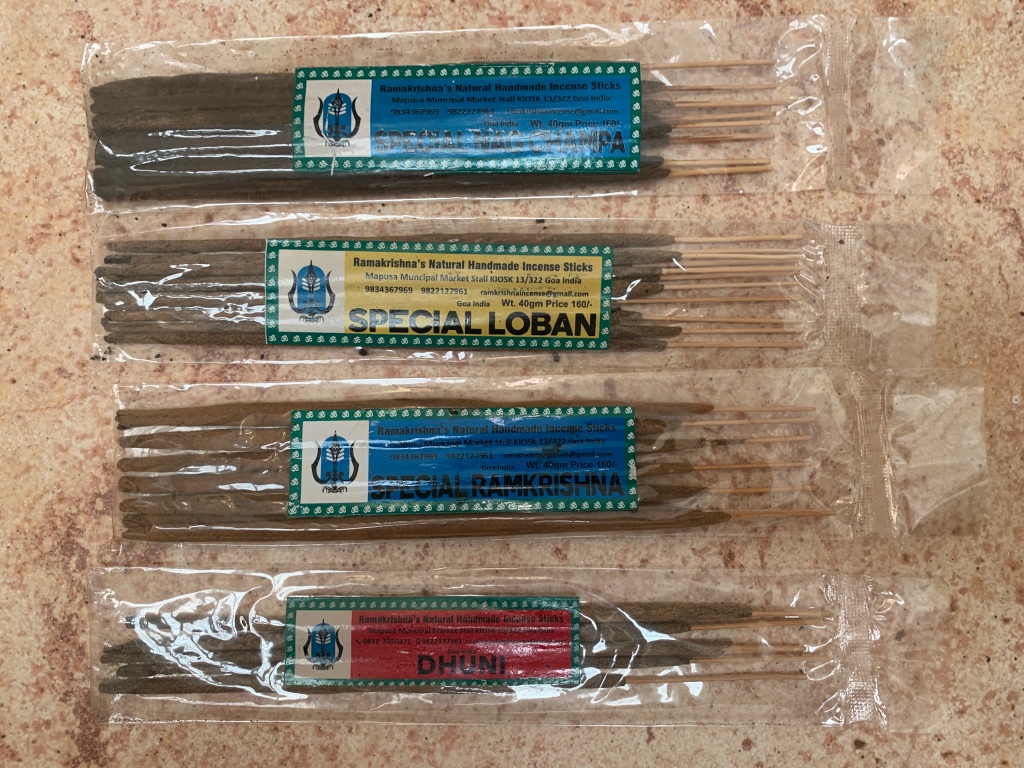
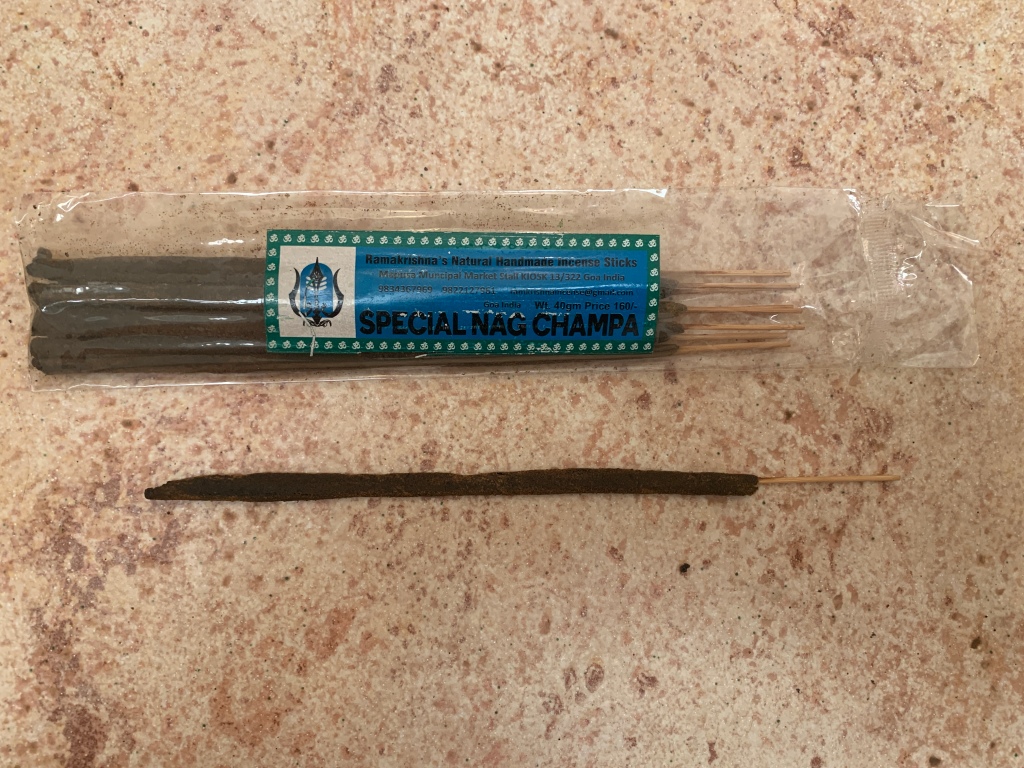
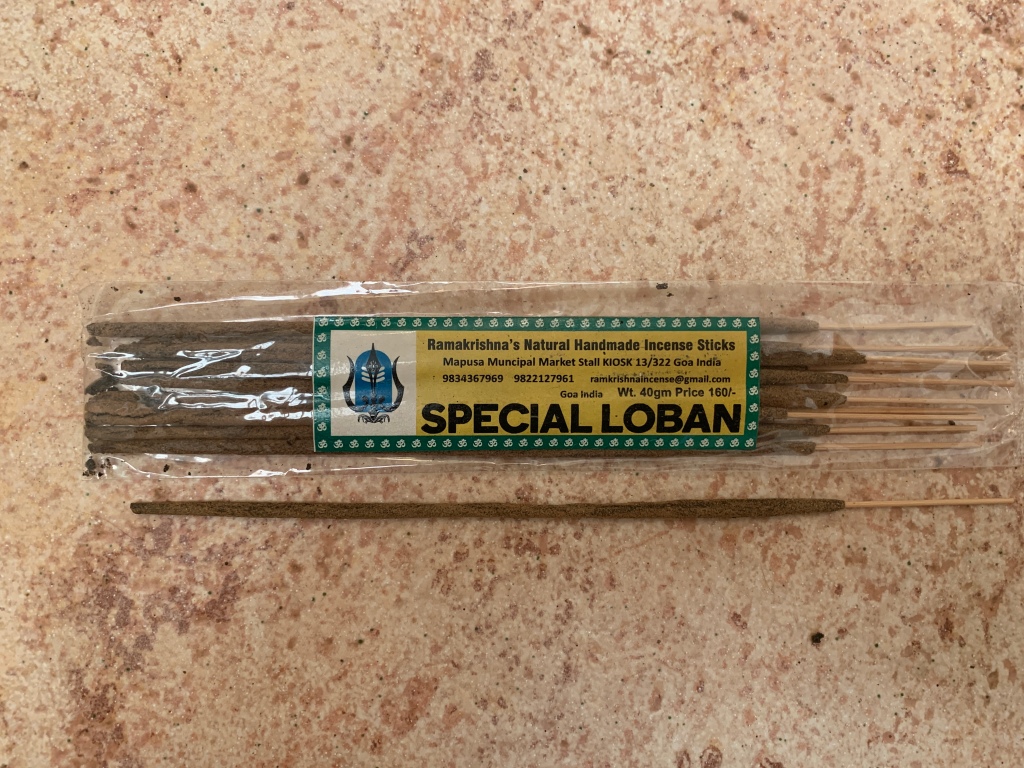
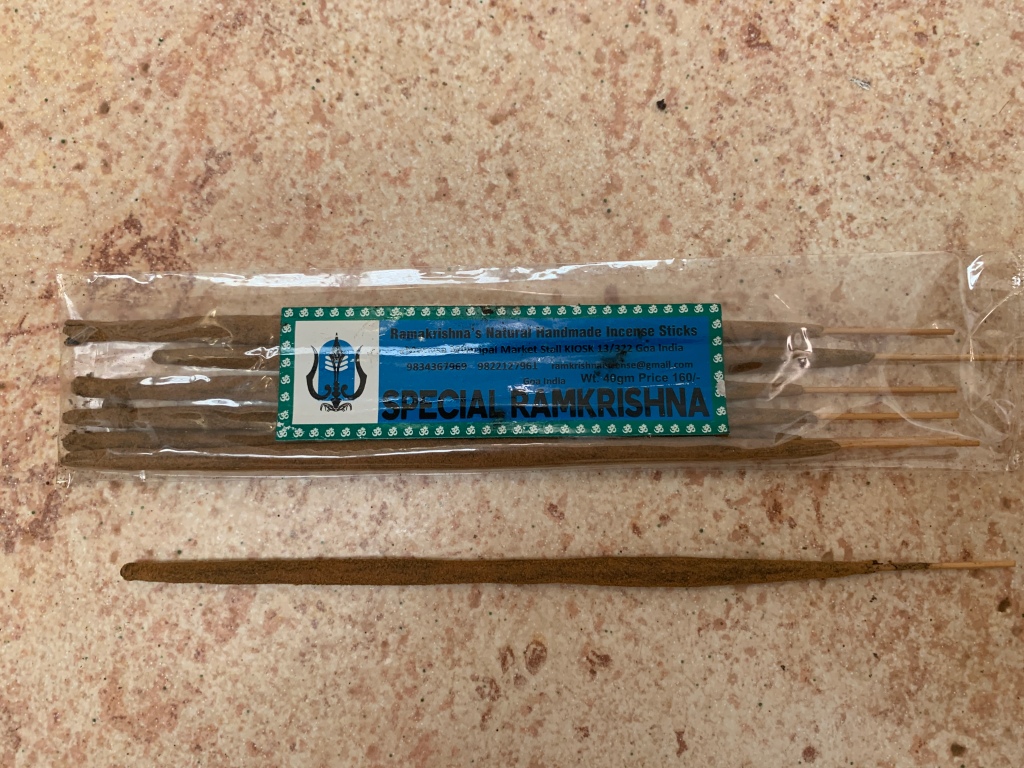
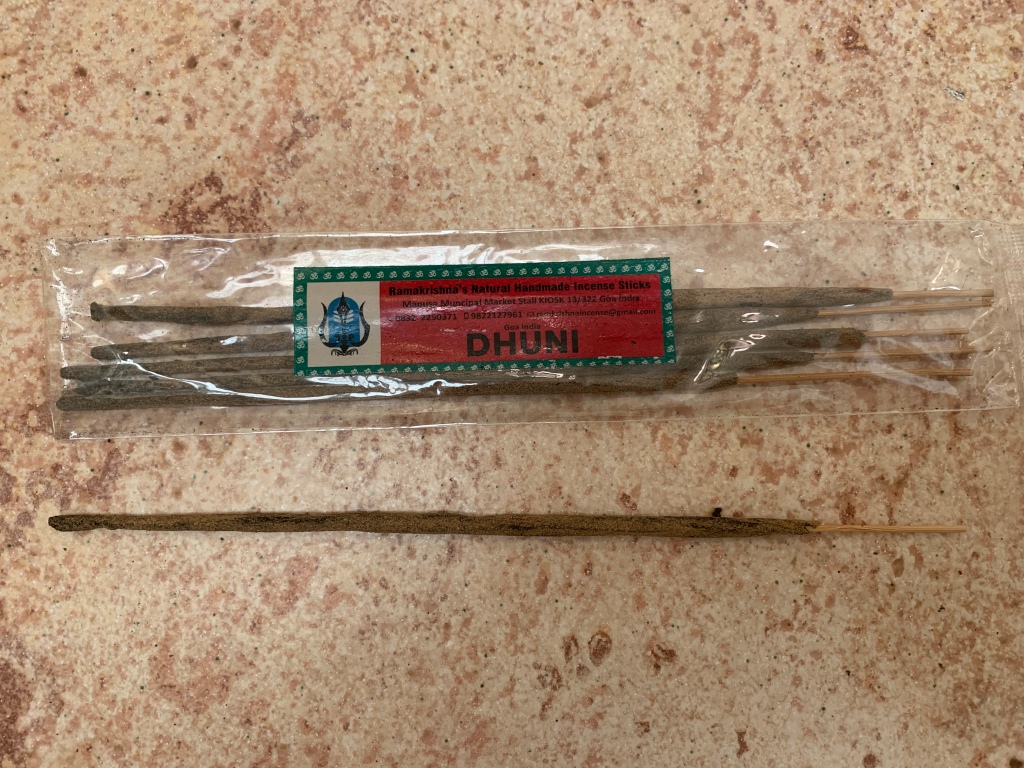
 In addition to the range of Meena Perfume Industries incenses Everest Traders sent me, included were a varying batch of Indian scents as well as a varying batch of Bhutanese incenses, the latter of which I will cover in the next installment. The following are incenses from a number of different suppliers, some of which I don’t believe I have seen imported here, at least not often.
In addition to the range of Meena Perfume Industries incenses Everest Traders sent me, included were a varying batch of Indian scents as well as a varying batch of Bhutanese incenses, the latter of which I will cover in the next installment. The following are incenses from a number of different suppliers, some of which I don’t believe I have seen imported here, at least not often. Loban incenses are an unusual breed. As far as I’ve been able to tell loban can mean benzoin or frankincense or resin mixes and you’re not usually told which; however, I’ve tried enough Indian frankincense sticks to know most of those don’t smell like lobans. The Absolute Benzoin at Temple of Incense or the Asana Sutra from Happy Hari are examples of pure charcoal benzoins and these are a bit closer to the loban but also not exact. The TOI Big Cleansing incense is probably the closest although in this case there’s more of an herbal quality to that incense that won’t often be found in a pure loban. And the
Loban incenses are an unusual breed. As far as I’ve been able to tell loban can mean benzoin or frankincense or resin mixes and you’re not usually told which; however, I’ve tried enough Indian frankincense sticks to know most of those don’t smell like lobans. The Absolute Benzoin at Temple of Incense or the Asana Sutra from Happy Hari are examples of pure charcoal benzoins and these are a bit closer to the loban but also not exact. The TOI Big Cleansing incense is probably the closest although in this case there’s more of an herbal quality to that incense that won’t often be found in a pure loban. And the  Pradhan Perfumer’s
Pradhan Perfumer’s 
 The Sree Trading Co.s’s
The Sree Trading Co.s’s  I believe I received a sample of the Sri Aurobindo Ashram Cottage Industries
I believe I received a sample of the Sri Aurobindo Ashram Cottage Industries  The last Indian incense package I was sent was 100g of something labelled as Temple Grade Mysore Sandalwood; however, I do not detect any sandalwood, scent or otherwise, in this incense at all. For $4 for 100g batch you would basically not expect it to, but since this is an incredibly inexpensive incense I decided to just evaluate it on its own. There’s something intriguing about the incense for sure. It’s a dusted charcoal with maybe a tiny bit of softness to it. It seems sort of like a mix of a sort of sweet champa-like base with a note I remember from previous Asta Sughanda incenses from long ago, a bit like that paper meets vanilla smell, but also there’s something like a rubber tire note to it that flirts between being a kind of weird subnote and a bit too intrusive. In fact given the number of sticks in this I burned at least five before I started writing this. I would guess that the intention of this batch was to give a sandalwood note but the mix was off in some way, it’s something I think importers run into occasionally. And so there seem to be some components in the mix that are kind of interesting. But ultimately I don’t think this one works and it reminds me in ways of some accidents I’ve been able to check out.
The last Indian incense package I was sent was 100g of something labelled as Temple Grade Mysore Sandalwood; however, I do not detect any sandalwood, scent or otherwise, in this incense at all. For $4 for 100g batch you would basically not expect it to, but since this is an incredibly inexpensive incense I decided to just evaluate it on its own. There’s something intriguing about the incense for sure. It’s a dusted charcoal with maybe a tiny bit of softness to it. It seems sort of like a mix of a sort of sweet champa-like base with a note I remember from previous Asta Sughanda incenses from long ago, a bit like that paper meets vanilla smell, but also there’s something like a rubber tire note to it that flirts between being a kind of weird subnote and a bit too intrusive. In fact given the number of sticks in this I burned at least five before I started writing this. I would guess that the intention of this batch was to give a sandalwood note but the mix was off in some way, it’s something I think importers run into occasionally. And so there seem to be some components in the mix that are kind of interesting. But ultimately I don’t think this one works and it reminds me in ways of some accidents I’ve been able to check out.
You must be logged in to post a comment.